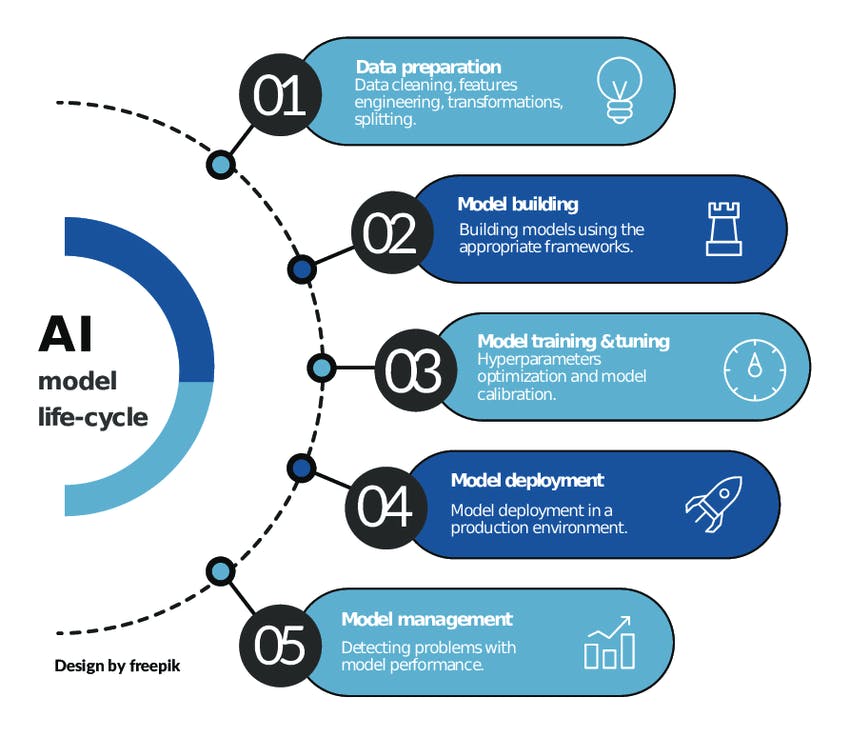

Example of AI in action across the insurance value chain. [3]
Artificial intelligence is applied to achieve better policy life cycle management, improving the process for insurers and the insured alike.
To ensure autonomous and intelligent systems (A/IS) are aligned to benefit, research and design must be underpinned by ethical and legal norms as well as methods.
We strongly believe that a value-based design methodology should become the essential focus for the companies.
Embedding values into autonomous systems requires a clear delineation of the community in which they are to be deployed, in particular, norms relevant to the kinds of tasks that they are designed to perform. Further different types of technical embodiments demand different sets of norms.
It is essential that educational institutions inform engineering students about ethics, justice, and human rights, address ethical research and business practices surrounding the development of A/IS, and attend to the responsibility of the technology sector vis-à-vis public interest issues.
To help achieve these goals, researchers and technologists need to embrace transparency regarding their processes, products, values, and design practices to increase end-user and community trust.
One of the biggest challenges to true policy life cycle management is that anything that even resembles a current approach is bifurcated between the underwriting process and claims (including fraud detection). Yet, usable data can be applied to identify risk and fraud detection.
Ideally data that could be used to identify risk at time of application would be available at the time the customer signs up for a policy, influencing the underwriting process.
Effective policy life cycle management begins at the point-of-sale/underwriting. Spotting the potential for fraud before the policy is even bound can help ensure that bad policies simply do not get written. Using an auto policy as an example, the data an insurer is looking for here is information related to the proposed policyholder’s driving history, prior policies, vehicles covered by those policies, known addresses associated with the applicant, other members of the household, prior number of claims and potentially even past premium information. At the point of sale, the internal and public record data outlined can be used to validate the info supplied by the customer.
Using AI to develop a comprehensive picture of the proposed insurer at the point of sale is the first stage of effectively managing policy. Data from previous policy holders as inspecting vehicles pre insured to validate whether it has ever been classified as a total loss vehicle, or vehicle with pre-existing damage, proof of photos that may represent current vehicle condition or indicate if it’s likely being used for commercial or personal use. If multiple vehicles are insured for the household but all for a single driver might indicate that the insurance will be covering an underage driver, an unlicensed driver or someone unable to obtain their own policy.
In the case where a policy has been accepted, the data can be obtained from the filing a claim, e.g .if the vehicle garaging location is accurate or does it indicate the insured may really reside in a different state or different part of the state, where annual premiums would be significantly higher.
Taking a data driven approach to policy life cycle management allows insurers to truly know their customers and make better decisions about claims and the policy going forward.
Further reading:
The IEEE Global Initiative on Ethics of Autonomous and Intelligent Systems. Ethically Aligned Design: A Vision for Prioritizing Human Well-being with Autonomous and Intelligent Systems, Version 2. IEEE, 2017. http://standards.ieee.org/develop/indconn/ec/autonomous_systems.html
Understanding Artificial Intelligence Ethics and Safety: a guide for responsible design and implementation of AI systems in the public sector. The Alan Turing Institute, 2019
https://doi.org/10.5281/zenodo.3240529
3.The Artificial Intelligence for Investors, Entrepreneurs and FinTech Visionaries. Susanne Chishti, Ivana Bartoletti, Anne Leslie, Shân Millie. 2020